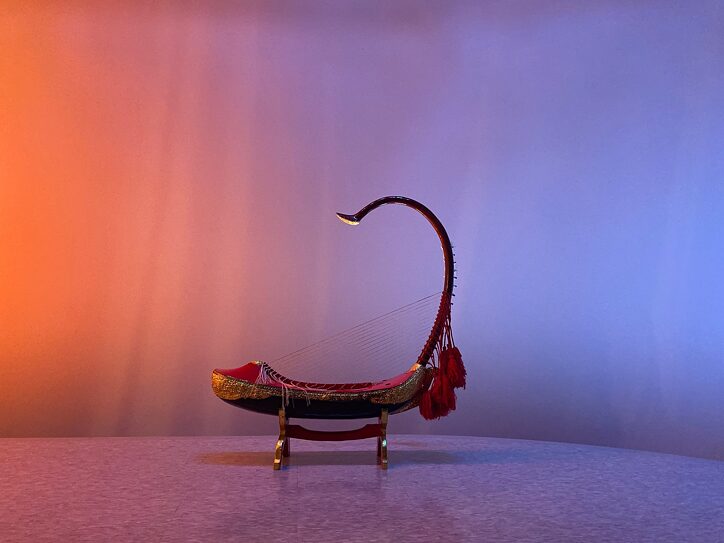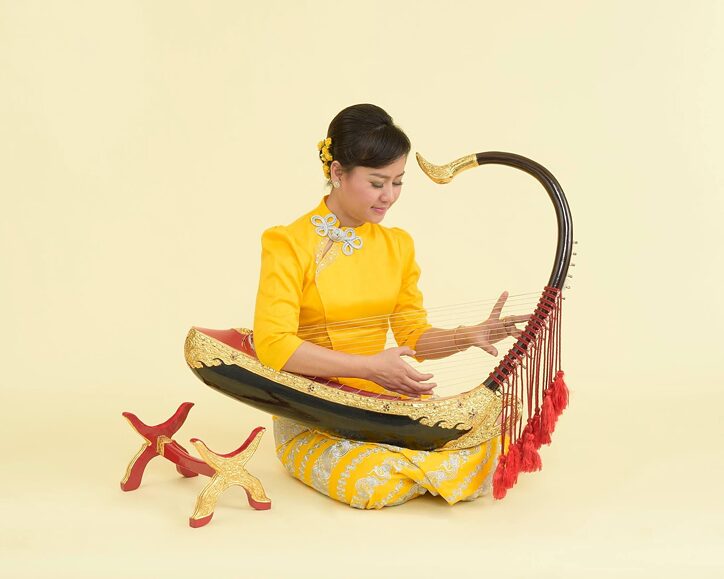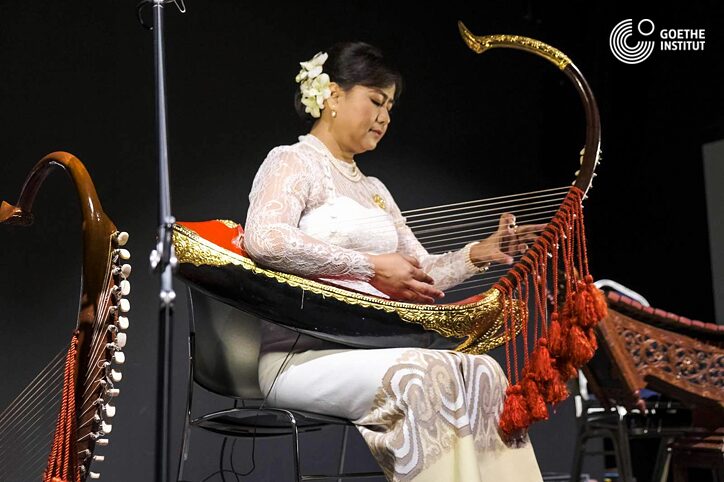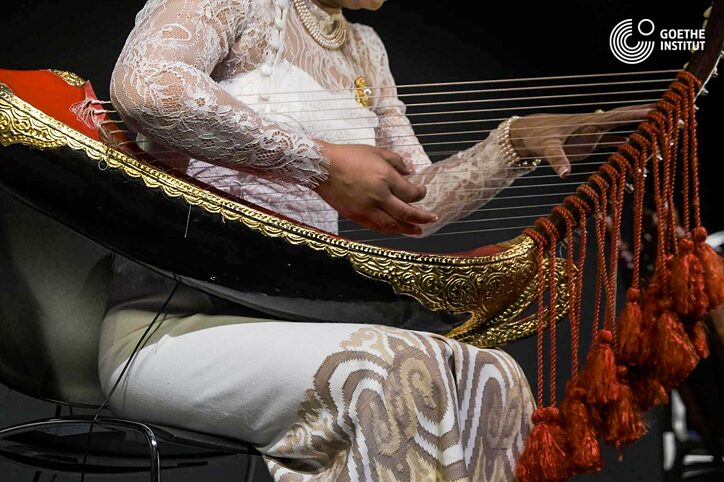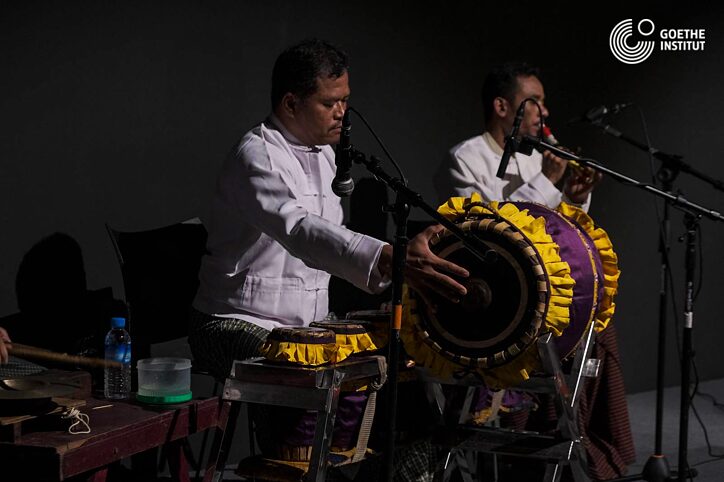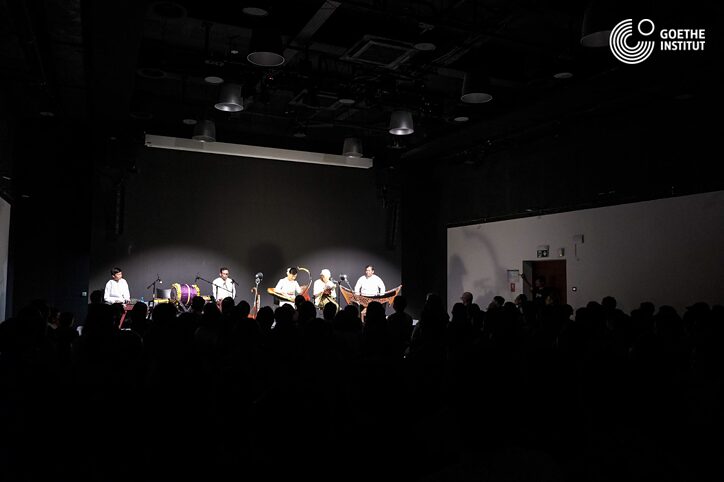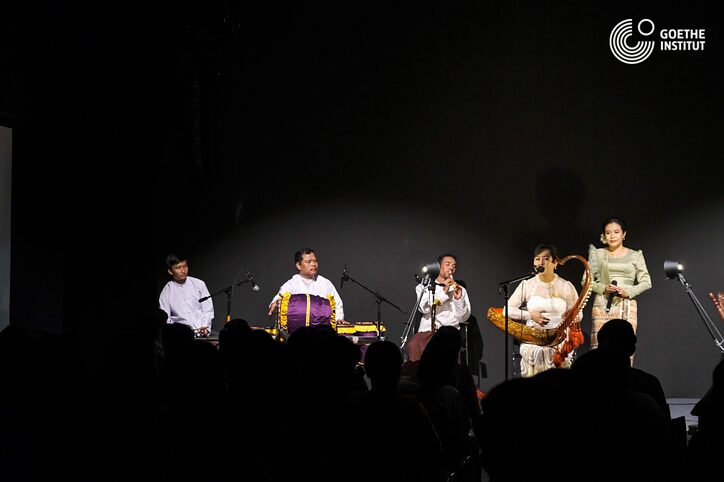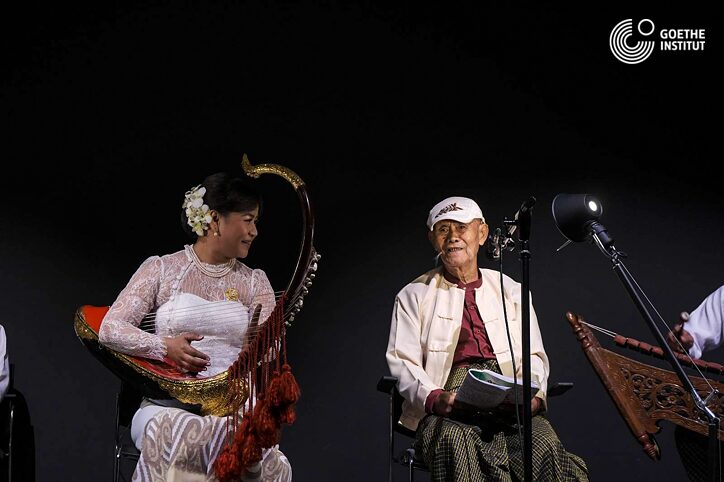Project article
New Step to Myanmar Music – feat. Harp
The Myanmar Harp, called Saung Gauk in Burmese, is regarded as a national musical instrument of Myanmar. The black and vermilion body of the instrument is covered with gold leaf, and the tip of the instrument is decorated in boyan-leaf-shape. The Saung Gauk, which is so visually inspiring is commonly referred to as the "King of Musical Instruments" in Myanmar.
By Dr. Su Zar Zar ( Musicologist, Myanmar)
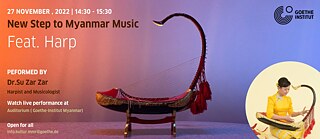
The Myanmar Harp (pronounced Saung in Burmese) is said to have been used since the Pyu period. According to historical records, it was played abroad by Myanmar musicians in the 9th century AD. Initially, a three-stringed harp was used, and later a seven-stringed harp was introduced. During the Konbaung period (1772-1885), the last dynasty of Burma, Myawaddy Min Gyi Wu Sa (Minister U Sa) (1766-1853) invented the 13-string harp. Following that, Saya Nyein invented the 14-string harp. During World War II, the famous harpist Alinka Kyaw Swa U Ba invented the 16-string harp, and this is the version of the harp most used by Burmese musicians today.
Myanmar Harpist and musicologist Su Zar Zar is a music teacher at the National University of Arts and Culture in Yangon. She was a Curriculum Officer for Music at the Japanese International Cooperation Agency’s (JICA) CREATE project, and this project generated a national music curriculum for public schools in Myanmar to be used nationwide. In 2015, Su Zar Zar became the first Myanmar citizen to receive a Ph.D. in music from an international University, receiving her Ph.D. in musicology from Tokyo University of the Arts. During her seven years in Japan, where she was a Monbusho Scholar, she initiated more than 25 concerts of Myanmar Traditional Music throughout Japan. In May of 2011, as a member of ASEAN Caravan of Goodwill, she performed Myanmar Harp for the victims of the earthquake as well as several charity concerts. During the 1990s in Myanmar, she was recognized for her harp performances with gold medals in various levels of the Traditional Performing Arts Competition, and also at the age of 10, she received a permanent recording award from the Myanmar Radio and Television Department (MRTV). In 2006, she was part of a music video shown at the Magic String Exhibition in New Delhi, India. Now, she is the headmistress of the Royal Music Academy and the director of The Music in Myanmar Federation and Music Society of Myanmar. Su is a fluent speaker of Japanese and English as well as her native Myanmar language.
Review by classical guitarist Sayar Myint Than Tun
I love Myanmar music, especially Mahar Gita (Myanmar Traditional Music). If it is so, why do I play classical guitar instead of playing Mehar Gita. It is because I have never seen or heard the performance of Myanmar traditional music during my early childhood. When I was a boy, while listening to the radio, if Myanmar traditional music was being broadcast on air, the adults suddenly turned off the radio. They did so because Myanmar traditional music was very boring for them. When I was 12, an uncle-like man from our neighborhood came to our house. He brought along his Myanmar harp (Saung Gauk) and played that thing in front of me. That was the first time I saw in life how Saung Gauk looked like. At that time, far from being known by other countries what Saung Gauk was, even the citizens of Myanmar were not enough informed about it. Upon hearing that Dr. Su Zar Zar was going to perform at Goethe-Institut Myanmar, I became very happy and interested in it. During my stay in Mandalay, I used to hear the sound of Myanmar harp, usually in Buddhist chapels and pagoda festivals. But I had never listened to it in an auditorium. In fact, I am not that familiar with Mahar Gita. However, the performance of Dr. Su Zar Zar was very sophisticated. She applied the dynamics systematically in a particular way, just like how it was supposed to put it in western classical music. Rhythm (See-Wahr), flut (palway), and xylophone (pattalhar) players did improvise incredibly well. I found the solo part performed by Dr. Su Zar Zar as a medley. This kind of act shows us the standard of Mahar Gita (Myanmar traditional) and as well the standard of Dr. Su Za Zar. Those who are much more informed about Mahar Gita, would definitely know better than me. The best part of the performance was the piece called “Pyi Taw Win” composed by Aye One Sayar Nhyar. It touched the heard of everyone and turned our eyes into tearing ones. Even in the case of a fire, we are responsible for putting out the fire. If it is so, why aren’t we so responsible for archiving and maintaining the ones that are still in good shape? As a matter of fact, the musical event “New Step to Myanmar Music. feat-Harp” organized by Goethe-Institut in close partnership with Dr. Su Zar Zar, was a kind of act that had inwardly and upwardly brought up our society.
